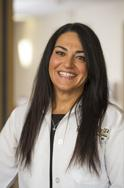- Calls to this hotline are currently being directed to Within Health or Eating Disorder Solutions
- Representatives are standing by 24/7 to help answer your questions
- All calls are confidential and HIPAA compliant
- There is no obligation or cost to call
- Eating Disorder Hope does not receive any commissions or fees dependent upon which provider you select
- Additional treatment providers are located on our directory or samhsa.gov
Hope for Individuals with Severe and Enduring Eating Disorders (SEED)

Contributor: Margherita Mascolo, MD, Medical Director, ACUTE Center for Eating Disorders at Denver Health
There is a common misconception that Anorexia Nervosa (AN) is a disease of the young.
While there is some truth to that since 90% of young women who develop an eating disorder do so between the ages of 12 and 25, there is a still a confounding number of women who develop the disease later in life (up to 10%).
Often times, when it manifests past the second decade of life, it can be precipitated by traumatic events or major life changes.
The statistics are staggering, with AN being the psychiatric condition with the highest mortality rate, only 50% of patients achieving complete recovery, and the mean duration from onset of illness to recovery being 7 years.
The recidivism rate for this patient population is also very high with 30% of those suffering from an eating disorder only partially reaching “recovery” and 20% remaining in the “severely ill” grouping (Hoek 2006, Keel 2010, Arcelus 2011, Kenny, 2016).
Severe and Enduring Eating Disorders (SEED) Diagnosis
In recent years, eating disorder psychology has recognized a sub-group of anorexia known as Severe and Enduring Eating Disorders (SEED).
While there is no diagnostic criteria or agreed upon definition, generally these patients can be classified as: (1) being consistently ill for 10 or more years; (2) having experienced at least one recognized therapeutic treatment; (3) displaying severity impairment across a number of life domains; and (4) demonstrating low motivation for recovery (Strober, Freeman, & Morrell, 1997).
From the study of this SEED group, we have also learned that there is significant evidence that after 10 years, AN becomes considerably more difficult to recover from and treat.
When treating this gravely ill population, several poignant questions immediately arise:
- How do we treat these patients?
- Do we aim for recovery?
- Is it even possible?
- Are their medical complications different due to longevity of illness?
Treating SEED Patients
Literature suggests that there is increased risk of mortality with lowest lifetime weight and chronicity of illness, thus suggesting a long course of disease has a negative impact on mortality.

So while these patients are highly resilient, they are also socially isolated and tend to manage their medical conditions without seeking professional help and continue to self-sooth with maladaptive behaviors.
So are their physical complaints different than their less chronic counterparts?
While their complaints tend to be the same, the severity of their illness is much more dire. The most common medical complication that persists and worsens with lasting malnutrition is osteoporosis. This condition begins early in the course of AN and is aggressive.
While the gold-standard of treatment is weight restoration with a number of pharmaceutical options available as a bridge until weight restoration is achieved, studies have shown that lack of weight gain leads to continued bone density loss at the rate of 1-4% per year.
Thus, one can only infer that osteoporosis is severe and leads to a high lifetime risk of fractures with its associated medical complications.

Understanding the potential risks involved with not seeking the proper treatment and taking into consideration the length of the disorder, age of the patient and severity of health complications will ultimately affect when and how a person is able to recover.
Although the above-mentioned statistics show a high recidivism rate, there is good news for patients suffering from AN and SEED; about 50% of patients do achieve recovery with proper psychiatric and medical care.
y!

Dr. Mascolo is the Interim Medical Director of ACUTE Center for Eating Disorder and a hospitalist at Denver Health. She completed her undergraduate work at the University of St. Thomas in Houston, Texas and earned her medical degree at the University of Texas Health Sciences Center. She completed her residency in Internal Medicine at the University of Colorado in Denver. She is board certified in Internal Medicine and is an Assistant Professor in the Department of Medicine at the University of Colorado. Dr. Mascolo is also proud to serve as Medical Liaison Chairperson for the IAEDP Denver Chapter.
The opinions and views of our guest contributors are shared to provide a broad perspective of eating disorders. These are not necessarily the views of Eating Disorder Hope, but an effort to offer discussion of various issues by different concerned individuals.
We at Eating Disorder Hope understand that eating disorders result from a combination of environmental and genetic factors. If you or a loved one are suffering from an eating disorder, please know that there is hope for you, and seek immediate professional help.
Published on May 7, 2017.
Reviewed By: Jacquelyn Ekern, MS, LPC on May 3, 2017.
Published on EatingDisorderHope.com
